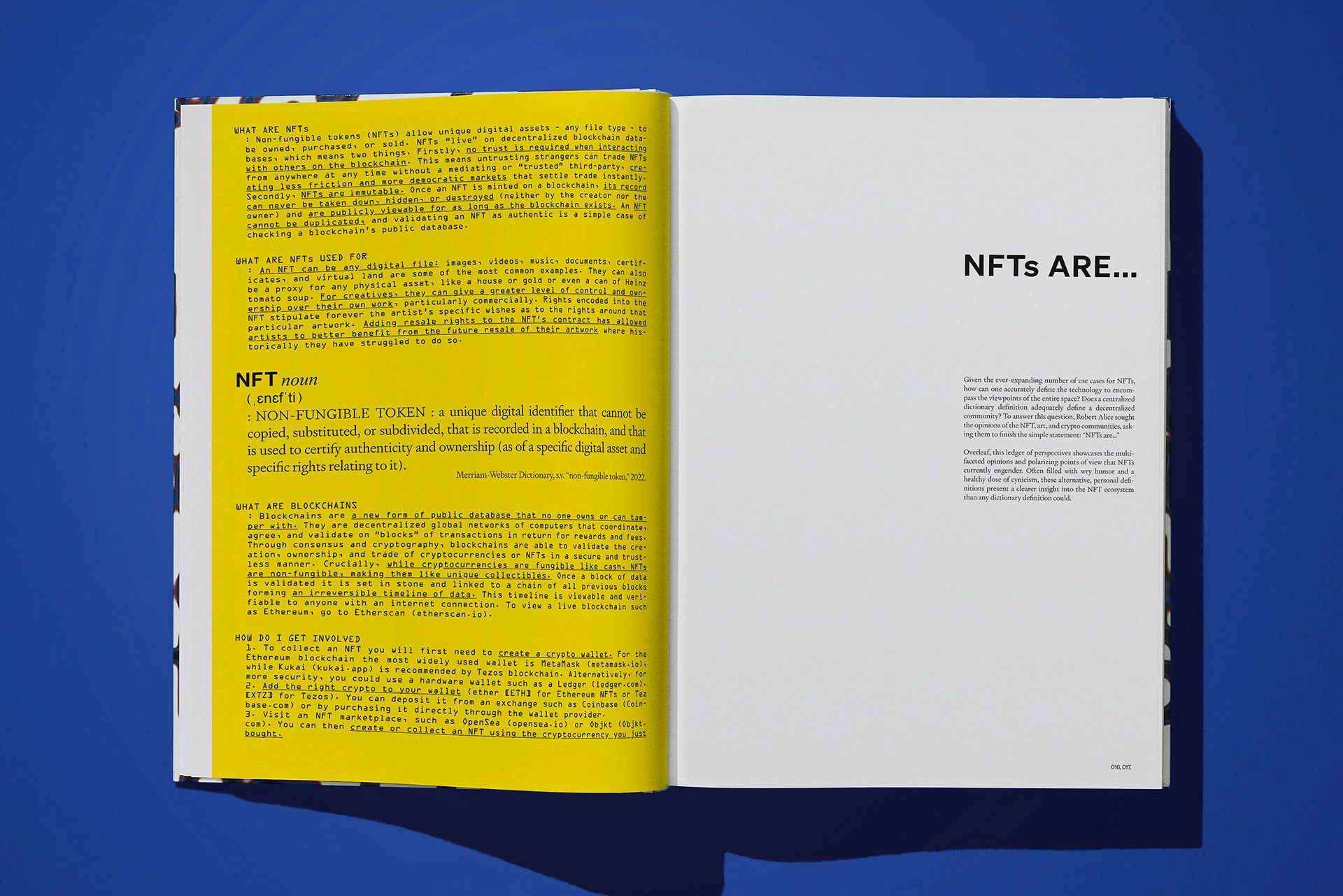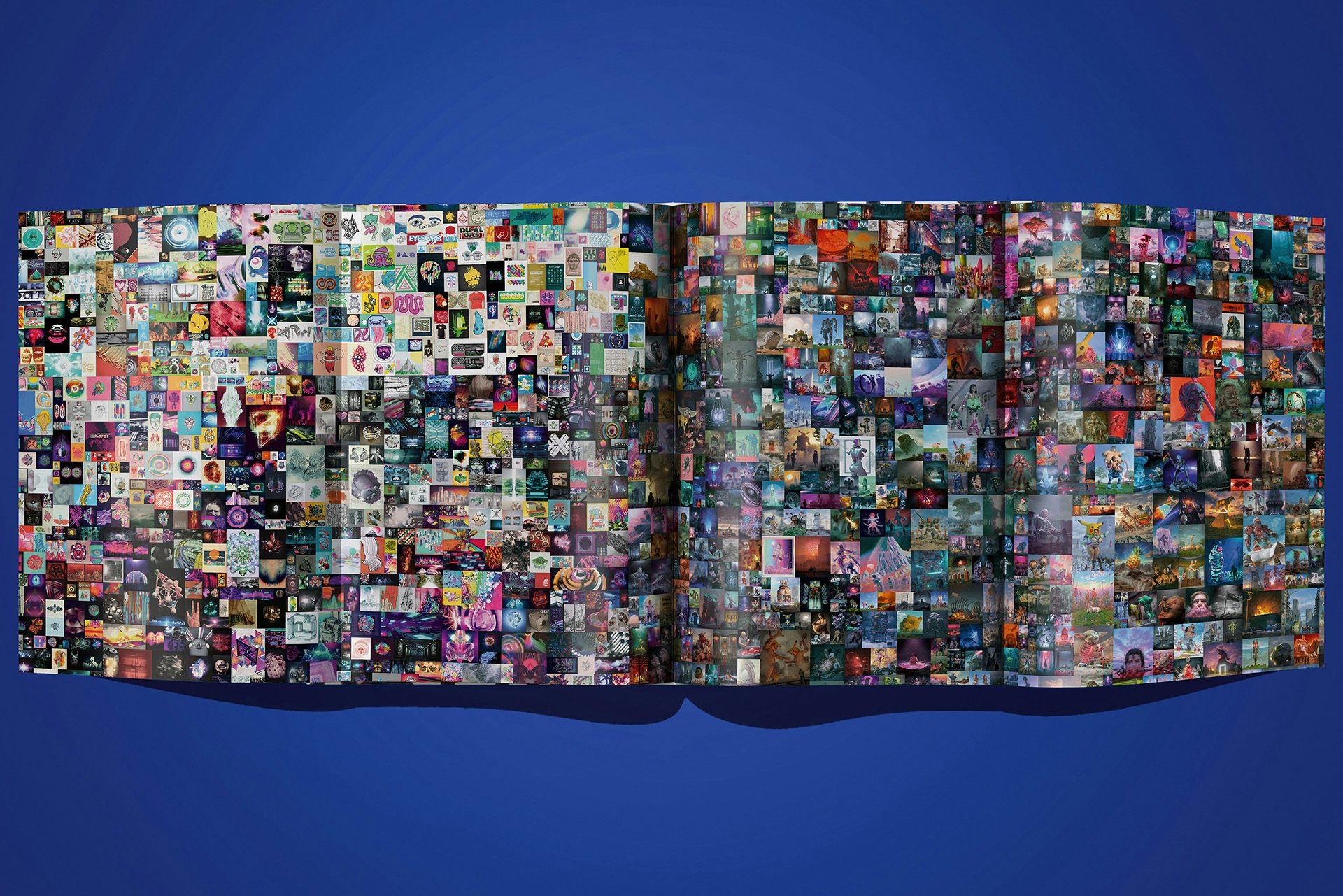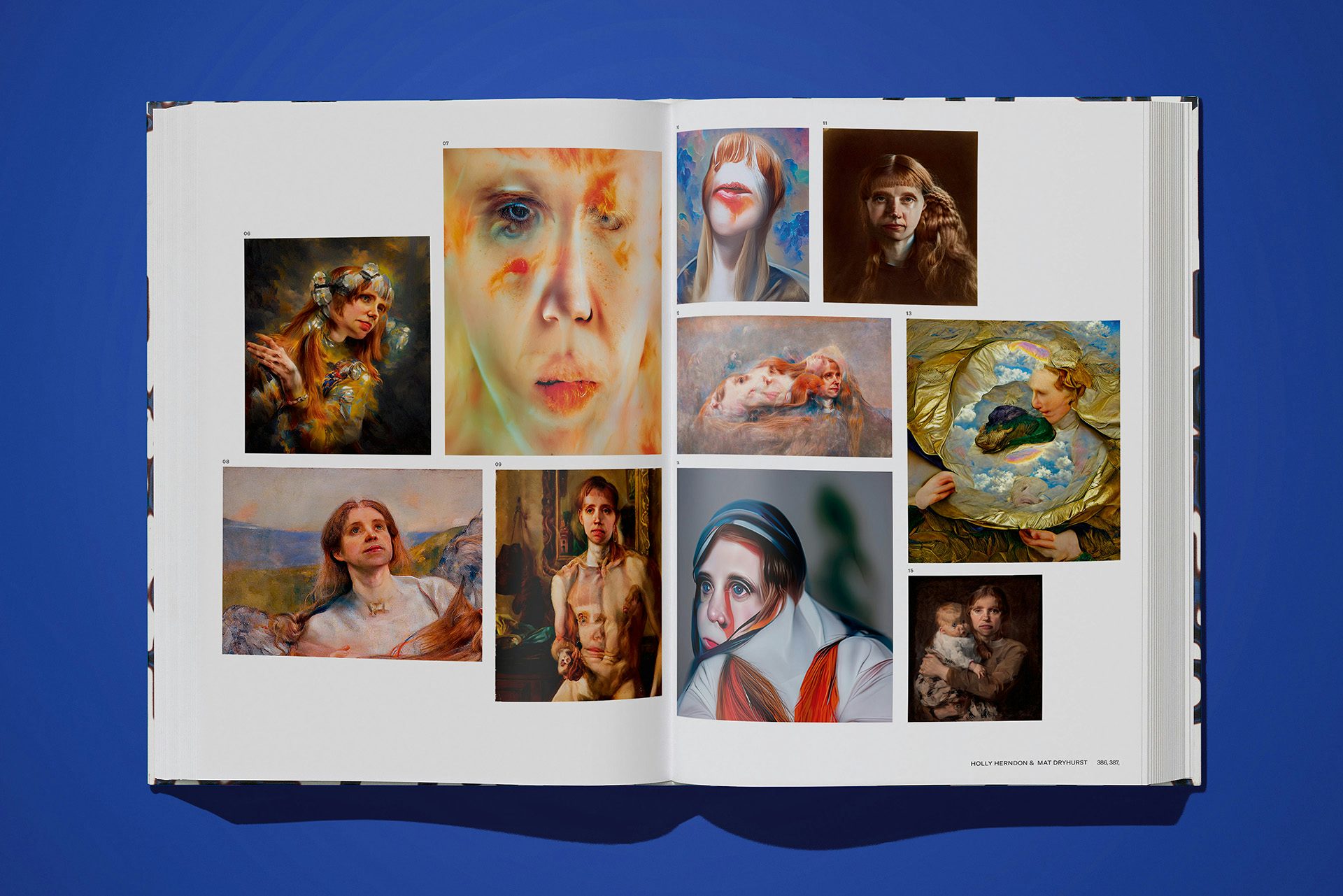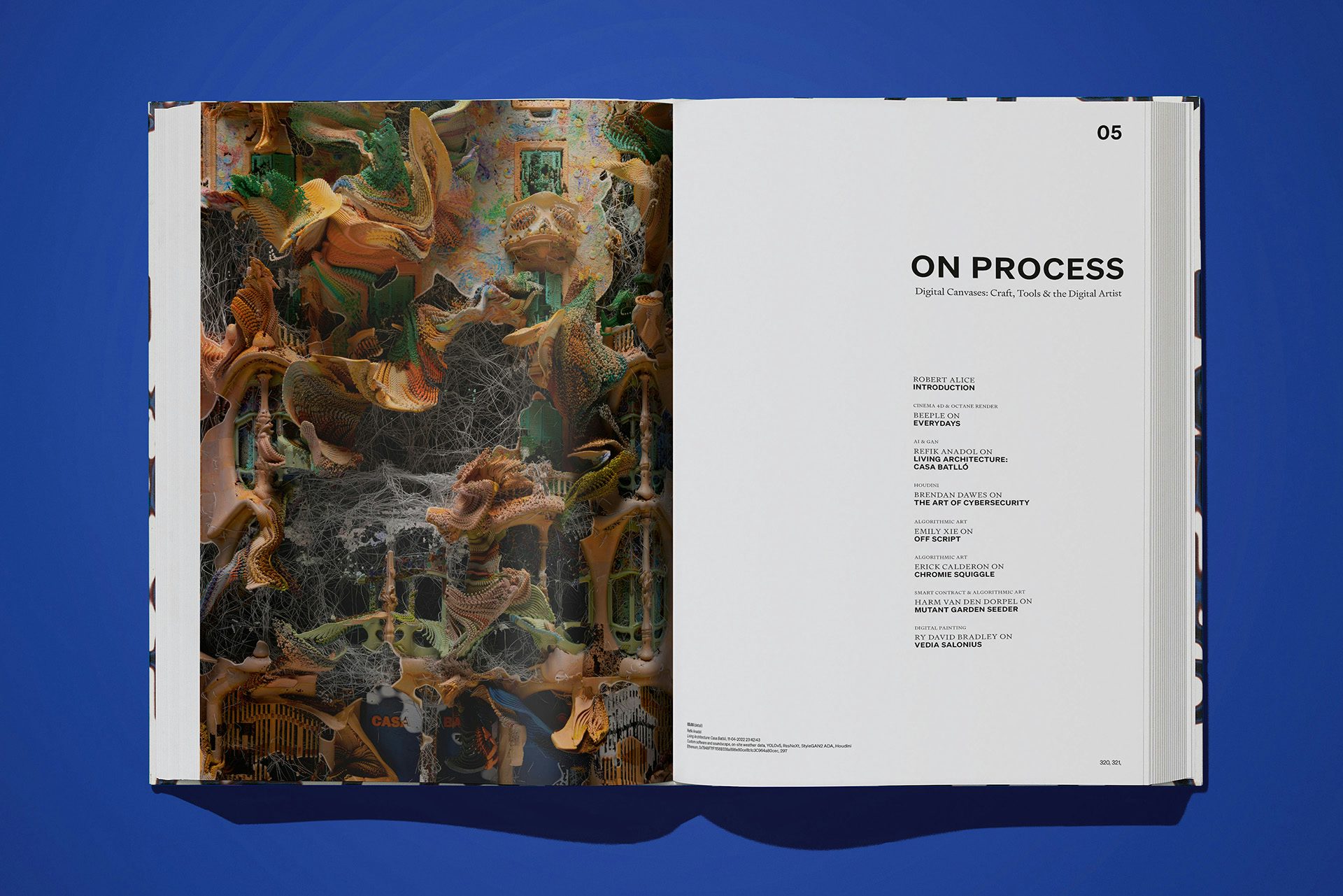What happened to NFTs?
Non-fungible tokens experienced a gold rush a couple of years ago, before mainstream interest waned and the market went into decline. Artist Robert Alice, who has edited an extensive new book on NFTs, talks to us about one of the most elusive, and divisive, web3 developments
If ‘word of the year’ lists are a barometer for gauging the moments that dominated culture and society, 2021 was the year of the non-fungible token. As a refresher, a non-fungible token is a unique identifier stored on blockchain – a decentralised digital ledger – that records ownership of an asset, which can be used to certify its authenticity and link re-sales to royalties. The idea of a ‘smart contract’ was first proposed by Nick Szabo in 1994, and by the early 2010s, the first assets were being registered on blockchain.
For years, NFTs were only being explored by a small community experimenting at the intersection of art and technology. However, they came to a crescendo in 2021 with the sale of Beeple’s Everydays: The First 5000 Days, which became the most expensive sale of an NFT at auction when it reached a price of $69,346,250 at Christie’s. “I think the media did a great job following the $ signs in clickbait news,” says Robert Alice, a pseudonymous artist and curator who has edited a new book, On NFTs, which puts the (far bigger) story down on paper. The book is available either as a collector’s edition or as a ‘hard code’ edition cocooned in a hand-made steel slipcase designed by Zak Group.
“As someone who is deeply committed to the space, the more interesting thing to look at is not the ‘peaks’ but the troughs,” says Alice. The market is in a widely publicised trough compared to the gold rush of 2021. Cryptocurrency crashes – including the collapse of leading crypto exchange FTX – and wider economic uncertainty have been attributed to the sharp decline. But in a sense it follows the usual pattern whenever a new technology bursts onto the scene: hype, crash, plateau. “As little as four years ago, there was no NFT space, and now in 2024 (even hugely down), the NFT space sees billions of dollars of art change hands each year. That is remarkable.”

Christie’s broke records with Beeple, but it broke new ground six months earlier with Alice, who was the first artist to sell an NFT at the auction house. Another block from the same collection sold at Christie’s has just been acquired by the Centre Pompidou in Paris, and in what it calls a “full circle moment”, Christie’s has launched its first “on-chain generative art collection” with 125 unique works by Alice to coincide with the book’s release.
On NFTs surveys 101 artists, from the perspective of 101 writers, who were chosen through a collaborative nomination process. “There are artists in the book that I had not heard of, and others whose work I don’t like,” Alice explains. “It has been a lesson in the power of decentralised co-curation and revealed my many blind spots and biases.”
There are also 11 essays providing context and thinking for newcomers and old-timers alike, covering topics such as the genesis and present-day role of avatars, the history of algorithmic art, web3 curatorial strategies, and the use of blockchain as an artistic medium. It promises to welcome debate, acknowledging the conflicting opinions of NFTs from the outset with a collection of revelatory, sometimes amusing descriptions of what they are. NFTs are “the building blocks of new participatory worlds”, according to one contribution; they are also “too dull to merit a book”, reads another. Another one perhaps best sums up the split opinion: ¯\_(ツ)_/¯

For many creators, NFTs represent a sense of freedom from an art world that has historically struggled to align value with digital art, and even from bigger powers such as the state.
A recent article by writer and researcher Vincent Desmond explained why NFTs were embraced by artists – particularly digital creators – in Nigeria, which had been gripped by a volatile currency and government interference in payments at the height of the nation’s political instability. “In Nigeria, at least for a while, cryptocurrency became the currency of the free.”
A Bored Ape, a metaverse land parcel, a digital receipt and a digital artwork in the Pompidou are all technically NFTs, but lumping them together does all of them a disservice
However, claims that NFTs could revolutionise creative production and valuation were rivalled by charges that artists and buyers were being duped, and that NFTs were simply a new plaything for the elite. Surely this was a utopian fantasy? Could a movement with a cartoon ape for a figurehead seriously make a difference? Alice’s own journey into the world of NFTs captures the positive side. A disillusioned artist saddled with student debt, Alice was able to quit their job and take a studio space thanks to a “modest amount of crypto and the sale of a number of NFTs”.
“I remember showing early blockchain based art to my friends in the art world. The response was always absolute rejection. As a student of art history, I knew then it was the right place to be.”

The difference in opinion perhaps stems from the misconceptions – or inadequate explanations – of what NFTs are. The valid concerns about energy consumption required to mint a lot of NFTs might not have been leveraged so much by an already carbon-intensive art world if the whole movement seemed more legitimate.
Most of the criticism actually seems to be about the market rather than NFTs themselves; as Alice points out, “NFTs are fundamentally just technology. Indeed, NFTs are a plethora of things, it’s actually a bit lazy to call digital art NFTs, but the term stuck during the first boom.
“A Bored Ape, a metaverse land parcel, a digital receipt and a digital artwork in the collection of the Pompidou are all technically NFTs, but lumping them together does all of them a disservice. It’s like saying a bank statement and a Raphael drawing are the same thing because they are both on paper. Creating more specific terminology will really help segment perception. It’s a wunderkammer-esque digital jumble sale at the moment.”


NFTs do not sit in a vacuum but as part of a network of forces that can influence their decline – such as cryptocurrency markets – and their success. One of the technologies that blossomed in tandem with NFTs is the metaverse, which is similarly evolving in the background despite receding from the headlines.
Although they are separate innovations, Alice believes that the metaverse can come into play in a meaningful way for artists working with NFTs as a “natively sympathetic exhibition context, which we currently do not have”. Alice says that there are opportunities here, especially when combined with other technologies such as AR and VR – for instance, “algorithmically generative experiences” that are unique to each person.
I wanted to take a slow look at what can be a fast art, in a medium that the wider general public understands
“Think TeamLabs but the expanded audience is billions of people, not thousands. Where was the largest contemporary art exhibition ever held? In Fortnite (Kaws, Serpentine). Hundreds of millions of people saw that show. It points to an exciting future for art.”
Alice says that NFTs have the potential to revolutionise art like the worlds of music and film, which, the artist says, “solved their distribution problems long ago”. Some film workers, and certainly a lot of musicians, would staunchly object to Alice’s suggestion that digital access has ultimately improved their industries. However, the underlying principle is about rethinking the art world’s boundaries.

“Art has always been a pilgrimage, something that gets concentrated geographically, something that is rare. NFTs and digital art fundamentally challenge that. I am not proclaiming the death of painting (again), I love (and make) physical work. It’s so important, and always will be. The sense of pilgrimage is uniquely valuable to art. But it caters to the few, not the many.” The cost of On NFTs (£750) may feel at odds with this perspective, and speaks to the tension between proper remuneration for artists and accessibility for all that will probably always circle around creative production.
An appreciation of the physical underpins why Alice chose to publish a survey on NFTs on the printed page. If NFTs blossomed and burst through via the chaotic channel of social media the first time around, the book represents a kind of course correction. “I wanted to take a slow look at what can be a fast art, in a medium that the wider general public understands. I wanted to give the history of NFTs that same respect one would publishing a major catalogue raisonné.
“Perhaps in time we will get to digitally native, blockchain-based publishing,” Alice continues. In the meantime, the author recognises that sometimes familiar channels can be the best vessel for unfamiliar concepts. “It is important to build bridges with a sense of collaboration and flexibility, while leveraging what these institutions do best.”
On NFTs by Robert Alice is published by Taschen; taschen.com




